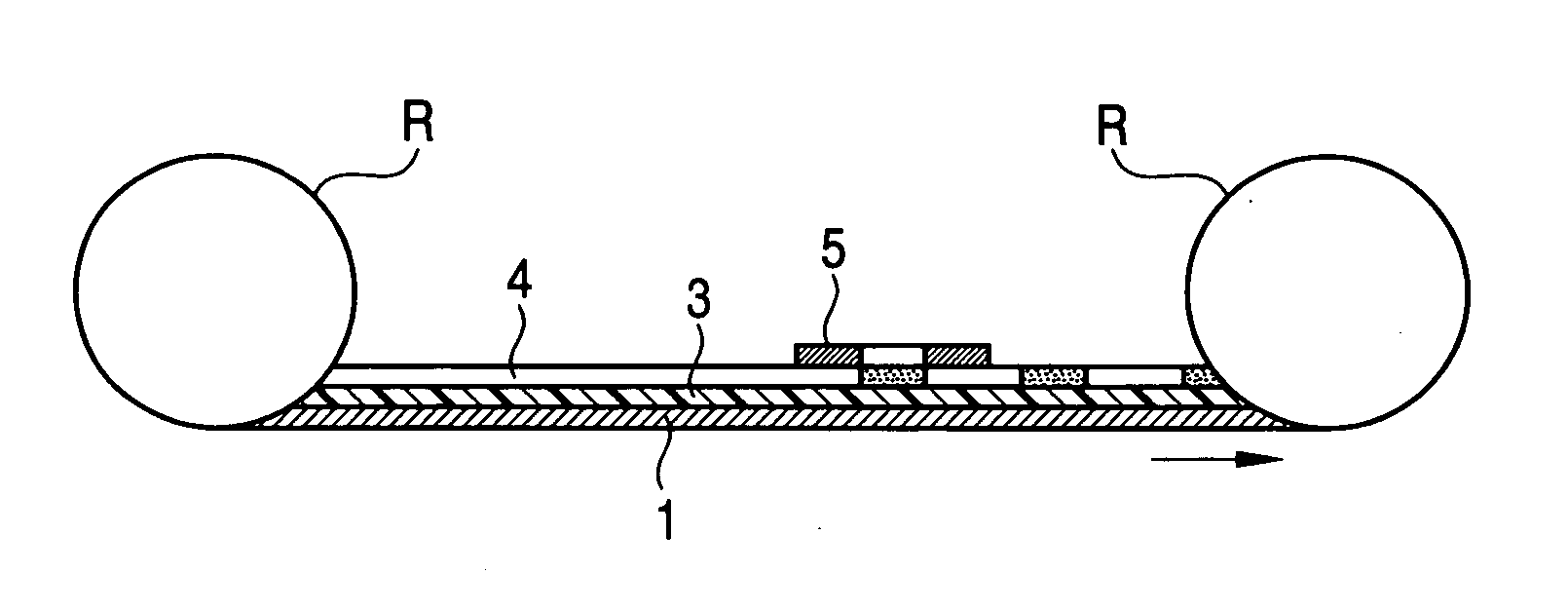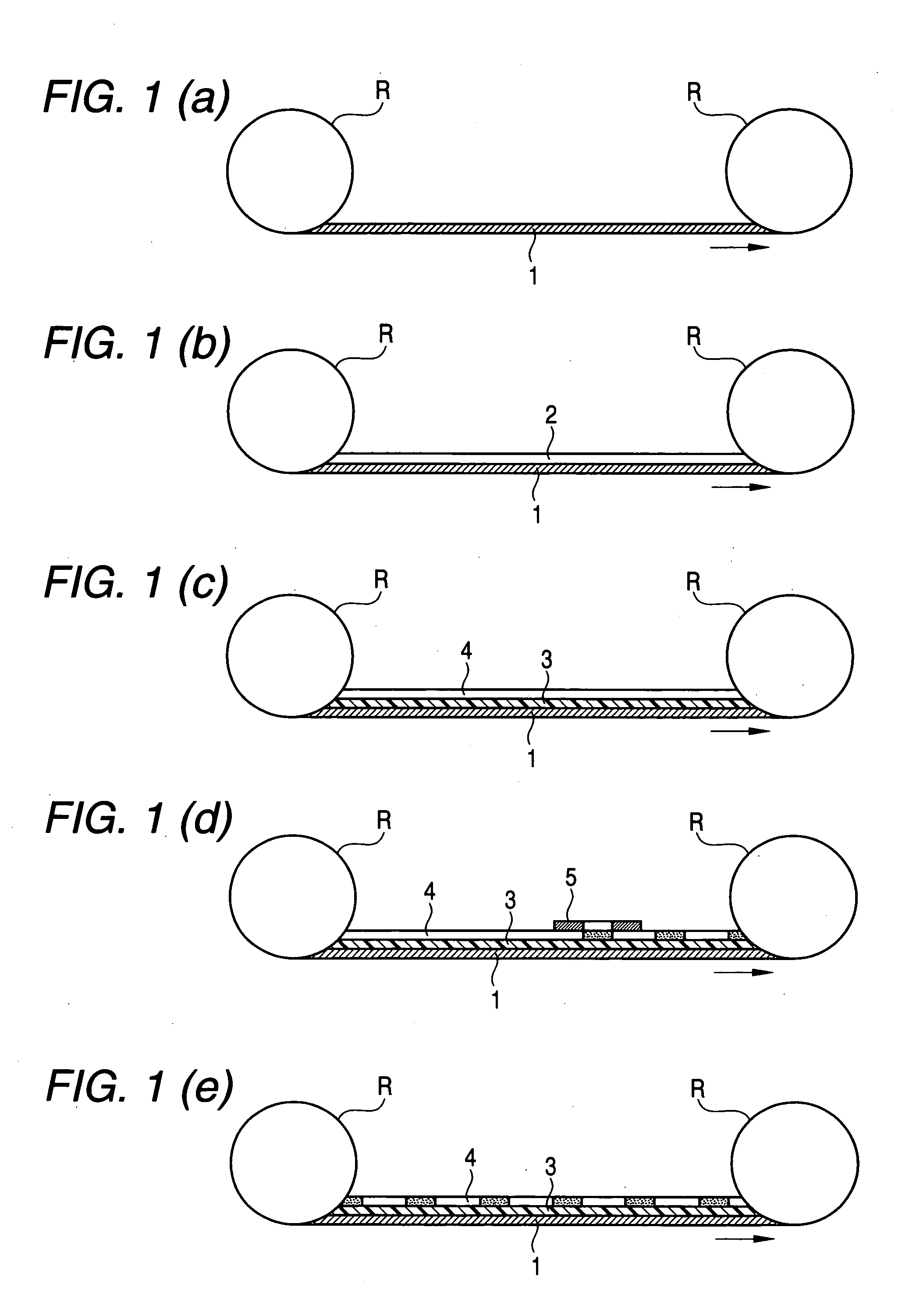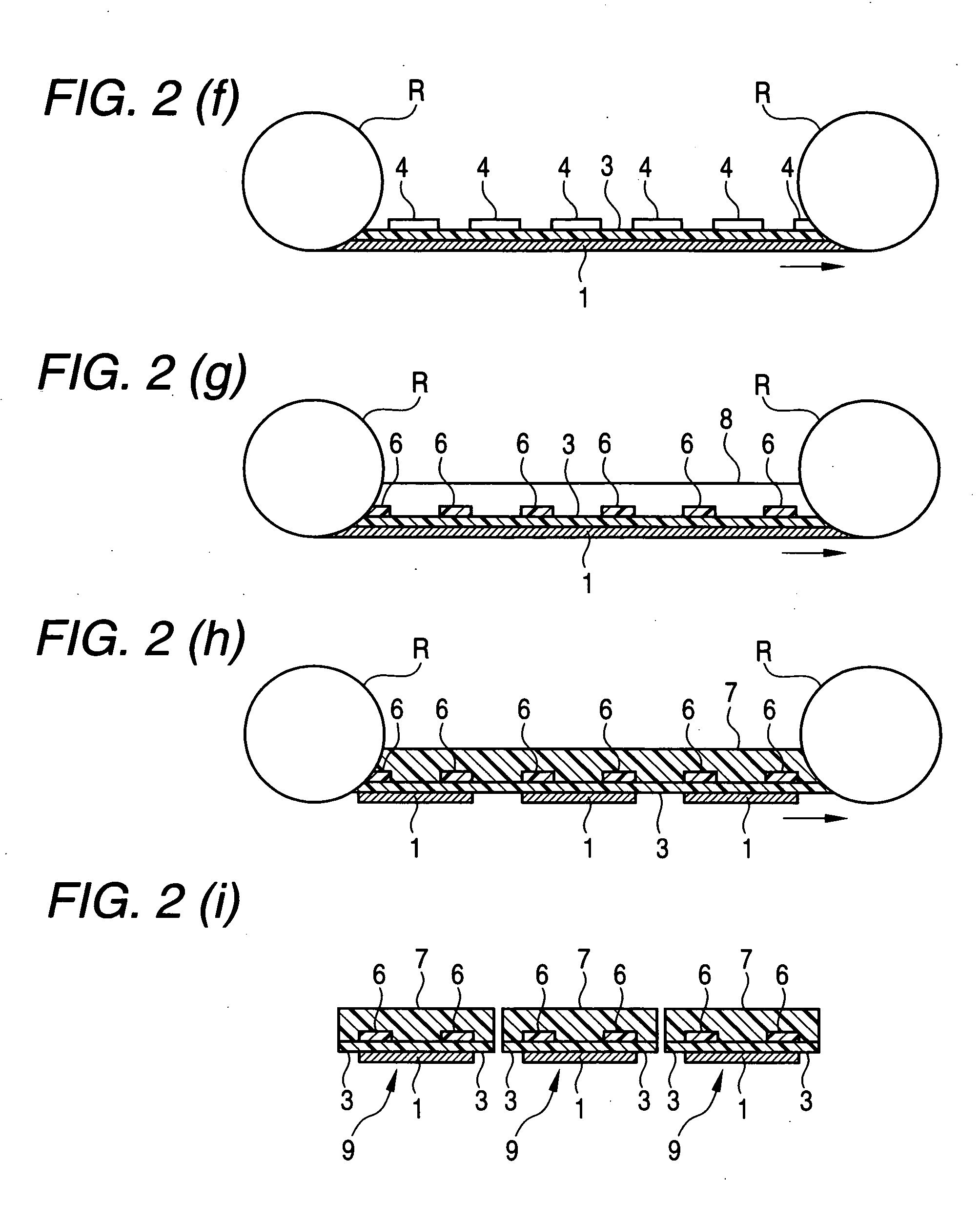Process for producing optical waveguide
a technology of optical waveguides and process steps, applied in the direction of photosensitive materials, instruments, photomechanical apparatuses, etc., can solve the problems of inability to stably form optical waveguides in terms of shape, inability to achieve cost reduction, and improve suitability
- Summary
- Abstract
- Description
- Claims
- Application Information
AI Technical Summary
Benefits of technology
Problems solved by technology
Method used
Image
Examples
examples
[0103] The present invention will be illustrated in greater detail with reference to the following Examples, but the invention should not be construed as being limited thereto.
Preparation of Varnishes
[0104] According to each of the formulations shown in Table 1, the ingredients were mixed and dissolved using cyclohexanone as a solvent. Thus, a fluorene derivative varnish A and a photosensitive fluorene derivative varnish B were prepared. The refractive indexes, as measured at a wavelength of 633 nm, of cured resins respectively obtained by curing these varnishes are also shown in Table 1.
TABLE 1(parts by weight)PhotosensitiveFluorenefluorenederivativederivativeVarnishvarnish Avarnish BFluorene derivative 18367Fluorene derivative 233Diluent17Photo-acid generator11Refractive index of curedresin1.5851.617(measuring wavelength, 633nm)
Fluorene derivative 1:
Bisphenoxyethanolfluorene diglycidyl ether (represented by general formula (1) wherein R1 to R6 each are a hydrogen atom or n =...
PUM
| Property | Measurement | Unit |
|---|---|---|
| length | aaaaa | aaaaa |
| length | aaaaa | aaaaa |
| length | aaaaa | aaaaa |
Abstract
Description
Claims
Application Information
 Login to View More
Login to View More - R&D
- Intellectual Property
- Life Sciences
- Materials
- Tech Scout
- Unparalleled Data Quality
- Higher Quality Content
- 60% Fewer Hallucinations
Browse by: Latest US Patents, China's latest patents, Technical Efficacy Thesaurus, Application Domain, Technology Topic, Popular Technical Reports.
© 2025 PatSnap. All rights reserved.Legal|Privacy policy|Modern Slavery Act Transparency Statement|Sitemap|About US| Contact US: help@patsnap.com



